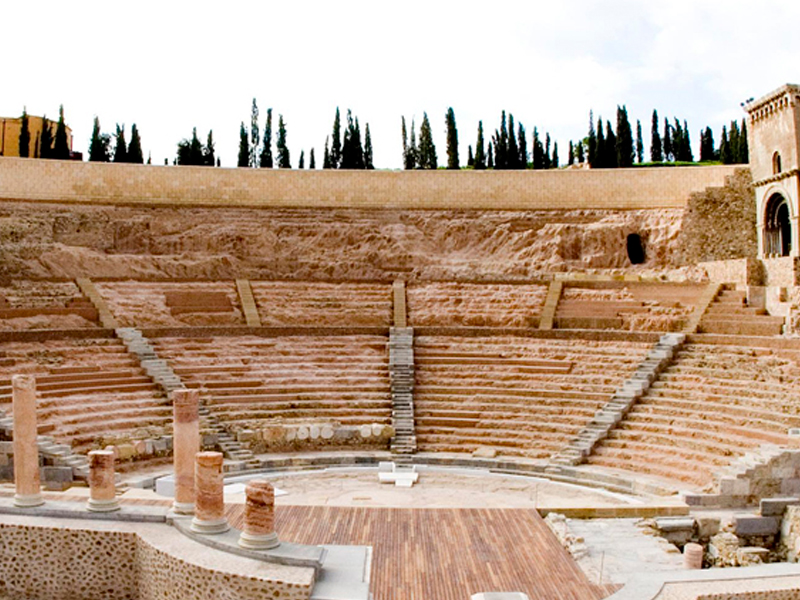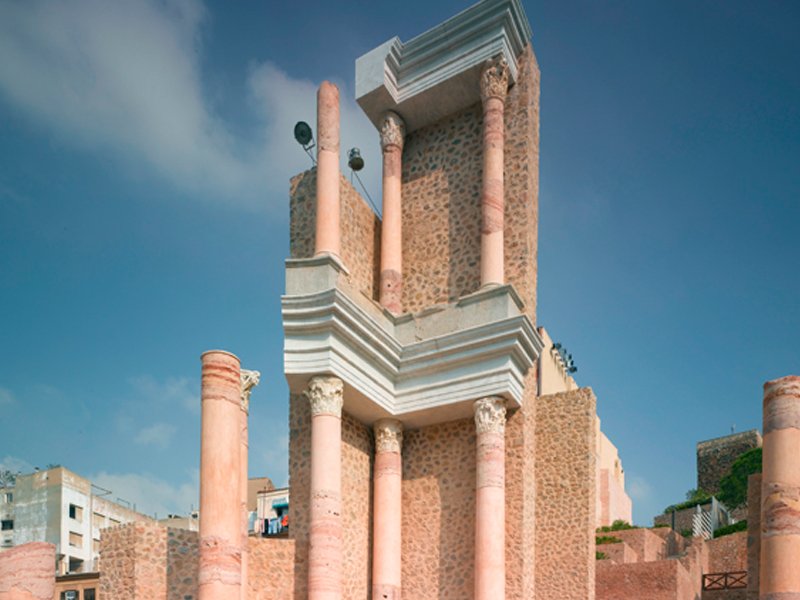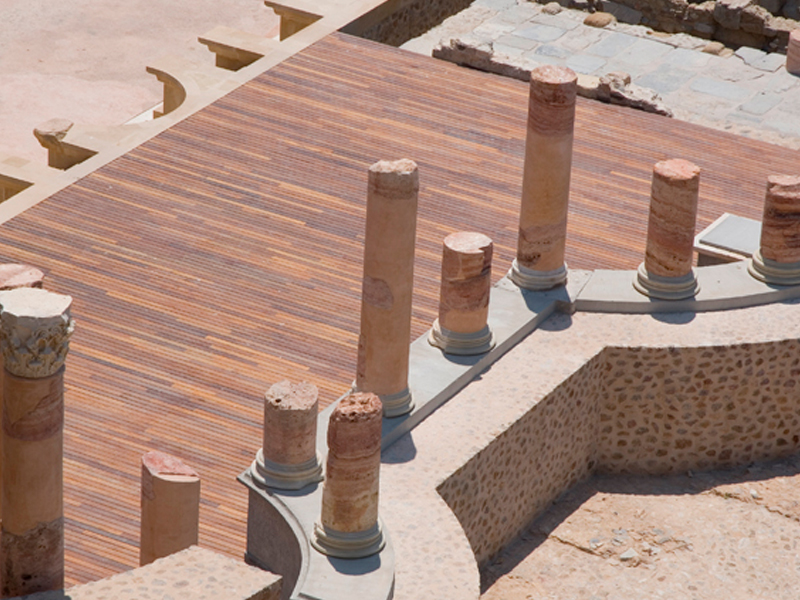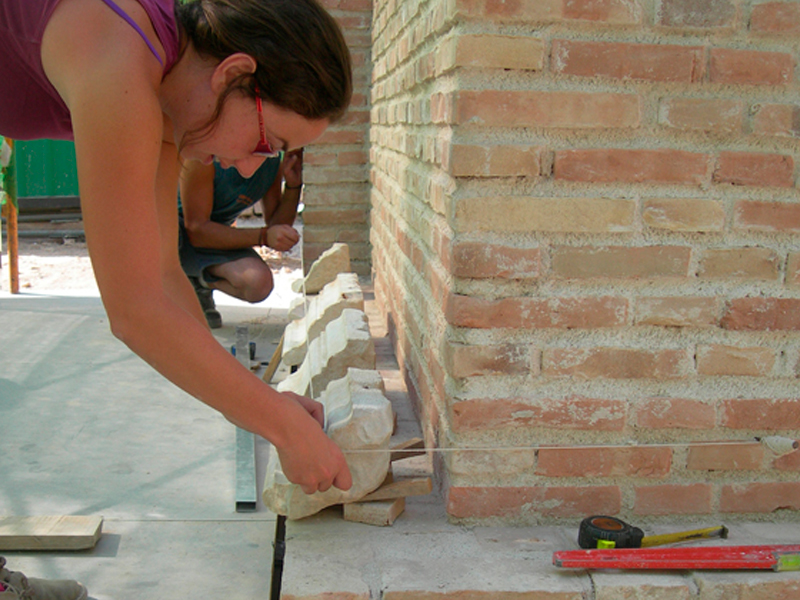Restoration
The restoration of the Roman Theater in Cartagena has undergone a process of reflection aimed at defining first function and end use of the monument, then depending on its use should consider the pattern to follow from the point of view of restoration. Given the most recent in terms of recovery of theatrical spaces of antiquity and the challenge posed by the restoration of our building at the beginning of the XXI century history, it has prevailed in this reflection recovery of the theater, within a comprehensive project, as a visitable monument is returned to society for contemplation and enjoyment in itself, and as a transmitter of the hallmarks of Roman Cartagena.
With these objectives has continued as a basic criterion:
1- The replenish with new construction in those places where the remains of the theater had disappeared completely, in order to outline the main lines of the building without altering the historical reading that has come it, doing advocacy especially in the delimitation of the building relative to the surrounding urban area.
2- consolidate those other areas, remains in varying degrees of conservation were maintained.
3- partial anastylosis, oriented replenishment of the entrances to ensure the visit and tours inside the building as well as the partial restoration of the scenic facade aimed at a better understanding of the monument and enjoy the exhibition of architectural elements that compose it .
These criteria are linked to:
A. Reversibility. They have taken the necessary measures to ensure that the new work can be dismantled without any damage to the original work. With that goal has been separated from the original new work by a network of fiber geotextile strips that allow both isolate enough to allow removed if necessary.
B. Minimization of material impact. Using as related to the original materials, and reproducing the approximate techniques used in the building. Basically it has been used a lime mortar with washed river sand in a ratio of one to one, performing color tests that allow the closest possible approximation to the original. In mortar andesites, limestones and phyllites of disintegrated rock, which are used in the work originally used. And using in stonecutting stone materials similar to those used in ancient characteristics.
In the restoration work they have involved different professionals; architects, archaeologists, restorers and a variety of trades, we must also emphasize the interdisciplinary nature of all decisions.





